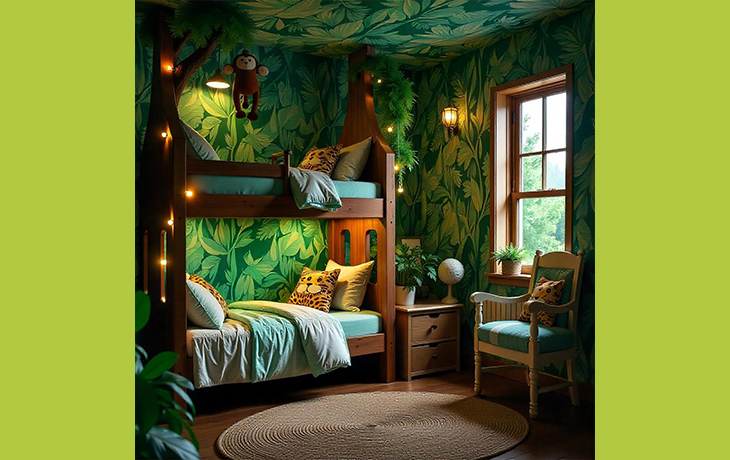
Eco-Friendly Interiors: How to Make Your Home Sustainable Without Compromising Style
Sustainability has become a key focus in modern interior design. Today, eco-friendly interiors are about blending functionality, elegance, and environmental responsibility. By making thoughtful design choices, you can create a beautiful home that reduces your carbon footprint without compromising on style. This guide will help you explore practical ways to achieve sustainable interiors while staying true to your aesthetic vision.
1. Use Sustainable Materials
Choosing eco-friendly materials is one of the most impactful ways to create a sustainable home.
Eco-Friendly Material Options:
• Bamboo: A fast-growing, renewable material ideal for flooring, furniture, and decor.
• Recycled Wood: Use reclaimed or repurposed wood for tables, shelves, and accent pieces.
• Cork: Durable and renewable, perfect for flooring or wall tiles.
• Stone: Opt for natural stone like granite or marble, which is durable and long-lasting.
Pro Tip: Avoid synthetic materials like plastic or vinyl and choose natural alternatives instead.
2. Opt for Energy-Efficient Lighting
Lighting plays a crucial role in setting the mood of your home, and choosing energy-efficient options helps save electricity.
Energy-Saving Lighting Ideas:
• Switch to LED bulbs, which consume less energy and last longer than traditional bulbs.
• Install dimmers to control brightness and reduce power consumption.
• Use motion-sensor lighting for areas like hallways and bathrooms to avoid wasting energy.
Pro Tip: Combine artificial lighting with natural light by using sheer curtains or large windows to brighten up your home during the day.
3. Incorporate Indoor Plants
Plants are a great way to enhance air quality and add a fresh, vibrant touch to your interiors.
Popular Indoor Plants:
• Peace Lily: Filters toxins and improves air quality.
• Areca Palm: Adds a tropical vibe while purifying the air.
• Snake Plant: Low maintenance and perfect for bedrooms.
• Herbs: Grow herbs like basil or mint in your kitchen for cooking and decoration.
Pro Tip: Use a monochromatic color scheme to create a seamless, cohesive look.
4. Invest in Sustainable Furniture
Choose furniture pieces that are stylish, durable, and kind to the planet.
Tips for Sustainable Furniture:
• Look for brands that use FSC-certified wood (Forest Stewardship Council) to ensure ethical sourcing.
• Consider upcycled furniture made from reclaimed materials.
• Avoid fast furniture that wears out quickly and opt for high-quality, long-lasting designs.
Pro Tip: Refurbish old furniture with new upholstery or paint for a refreshed, sustainable look.
5. Choose Eco-Friendly Paints and Finishes
Traditional paints can release harmful VOCs (Volatile Organic Compounds) into the air. Opt for non-toxic alternatives.
Eco-Friendly Paint Options:
• Use low-VOC or zero-VOC paints for walls and furniture.
• Consider natural lime-based or clay paints for an earthy finish.
• Use water-based varnishes and sealants instead of chemical-based ones.
Pro Tip: Experiment with textures like limewash or eco-friendly wallpaper for a unique and sustainable touch.
6. Maximize Natural Light and Ventilation
Designing your home to make the most of natural resources reduces the need for artificial lighting and cooling.
How to Maximize Natural Light:
• Add large windows or skylights to brighten interiors.
• Use light-colored walls and reflective surfaces to spread natural light.
• Incorporate cross-ventilation by strategically placing windows to keep your home cool naturally.
Pro Tip: Install energy-efficient glass or double-glazed windows to reduce heat transfer and save energy.
7. Incorporate Recycled and Upcycled Decor
Mirrors and glass create the illusion of more space by reflecting light and opening up the room visually.
Ideas for Sustainable Decor:
• Use recycled glass vases or jars as centerpieces.
• Add rugs and cushions made from organic cotton, jute, or hemp.
• Display vintage or handmade items for a unique and personalized touch.
Pro Tip: DIY decor projects can add a personal touch while reducing waste. Try repurposing old items into stylish decor pieces.
9. Focus on Water Conservation
Reduce water usage in your home with smart plumbing and fixtures.
Water-Saving Ideas:
• Install low-flow faucets and showerheads to minimize water waste.
• Use dual-flush toilets for efficient water usage.
• Harvest rainwater for gardening or outdoor cleaning.
Pro Tip: Choose plants that require less water to maintain a sustainable garden.
10. Embrace Minimalism
Sustainable living often aligns with minimalist design. Focus on quality over quantity to reduce waste and clutter.
Minimalist Tips:
• Invest in fewer, high-quality pieces that serve multiple purposes.
• Use neutral and earthy tones to create a calm, cohesive space.
• Declutter regularly to maintain a clean and organized look.
Pro Tip: Donate or recycle items you no longer need instead of discarding them.




